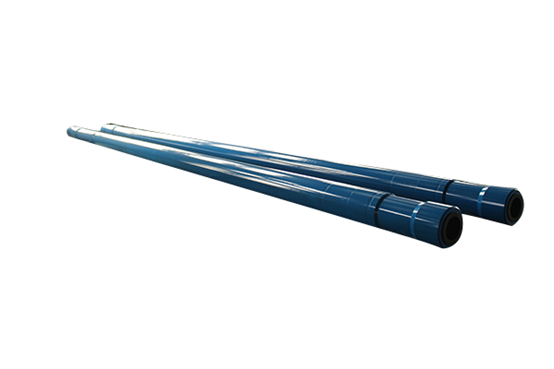The PDM drill (Progressive Displacement Motor drill) is a type of downhole power drilling tool that relies on drilling fluid to convert hydraulic energy into mechanical energy. Its operation principle involves using a mud pump to transport mud through a bypass valve to the motor, where a pressure differential is created at the motor’s inlet and outlet. This differential drives the rotor to rotate around the stator’s axis, ultimately transferring rotational speed and torque through the universal joint and drive shaft to the drill bit, facilitating efficient drilling operations.
Main Components
The PDM drill consists of four core components:
- Bypass Valve: Comprising the valve body, valve sleeve, valve core, and spring, the bypass valve can switch between bypass and closed states to ensure the mud flows through the motor and effectively converts energy. When the mud flow and pressure reach standard values, the valve core moves down to close the bypass port; if the flow is too low or the pump stops, the spring pushes the valve core up, opening the bypass.
- Motor: Made up of a stator and rotor, the stator is lined with rubber, while the rotor is a hard-shelled screw. The engagement between the rotor and stator forms a helical sealing chamber, enabling energy conversion. The number of heads on the rotor influences the relationship between speed and torque: a single-head rotor offers higher speed but lower torque, while a multi-head rotor does the opposite.
- Universal Joint: This component converts the planetary motion of the motor into the fixed-axis rotation of the drive shaft, transmitting the generated torque and speed to the drive shaft, typically designed in a flexible style.
- Drive Shaft: It transfers the motor’s rotational power to the drill bit while withstanding axial and radial loads generated by drilling pressure. Our drive shaft structure has been patented, providing a longer lifespan and higher load capacity.
Usage Requirements
To ensure the proper functioning of the PDM drill, the following requirements should be followed:
- Drilling Fluid Requirements: The PDM drill can efficiently work with various types of drilling mud, including oil-based, emulsified, clay, and even freshwater. The viscosity and density of the mud have minimal impact on the equipment, but they directly influence system pressure. The sand content in the mud should be kept below 1% to prevent negative effects on the tool’s performance. Each drill model has a specific input flow range, with optimal efficiency usually found at the midpoint of this range.
- Mud Pressure Requirements: When the drill is suspended, the pressure drop across the mud remains constant. As the drill bit contacts the bottom, the drilling pressure increases, leading to a rise in mud circulation pressure and pump pressure. Operators can use the following formula for control:
Bit Pump Pressure=Circulation Pump Pressure +Tool Load Pressure Drop
The circulation pump pressure refers to the pump pressure when the drill is not in contact with the bottom, known as the off-bottom pump pressure. When the bit pump pressure reaches the maximum recommended pressure, the drill generates optimal torque; further increases in drilling pressure will elevate the pump pressure. If the pressure exceeds the maximum design limit, it is crucial to reduce the drilling pressure to prevent motor damage.
Conclusion
In summary, the design and operational requirements of the PDM drill are closely linked. By effectively controlling mud flow, pressure, and mud characteristics, one can ensure efficient and safe drilling operations. Understanding and mastering these key parameters can significantly enhance the efficiency and safety of drilling activities.
Post time: Oct-18-2024





